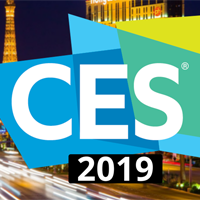Broadcasters Need To Connect To Connected Cars

 LAS VEGAS — Broadcast TV’s future in the connected car may come into focus for a while yet, but that shouldn’t keep the industry from closely collaborating with auto manufacturers to shape that future.
LAS VEGAS — Broadcast TV’s future in the connected car may come into focus for a while yet, but that shouldn’t keep the industry from closely collaborating with auto manufacturers to shape that future.
It was clear that for now radio — not television — is on the front lines of such discussions with auto OEMs from a panel sponsored by the NAB here on Tuesday. For radio, the stakes continue to grow as more connected auto models roll out. Caroline Beasley, CEO of the Beasley Media Group, said that 70% of her stations’ listening came from inside of cars, despite being available on multiple platforms and devices.
That statistic alone should drive an active conversation with OEMs, she said, and it’s a conversation she’s helping to steer as co-chair of NAB’s board along with the efforts of an auto committee within the group.
“We need to be at the table today with OEMs to help craft the vision going forward,” Beasley said.
Steve Newberry, EVP at NAB, said those conversations with the auto industry began in earnest just over two years ago. The talks have continued apace on both the connected and autonomous auto fronts because “the broadcast industry can’t stick its head in the sand” on either, he said.
“Broadcasting will be the preeminent providers of content” as new technologies like 5G and ATSC 3.0 roll out and amplify interactivity, Newberry said, because the industry is optimally positioned already in the one-to-many media model.
Of course, the connected car is equally about the one-to-one paradigm. Ben Rosenberg of the BBC’s distribution and business development division said the British broadcaster, which has been running some early 5G trials, is exploring how to work in both modes.
“The next phase is how you switch from one-to-many to unicast and then back through again,” he said.
Toggling between individualized content and content for the masses will require changes in the content itself, Newberry added.
“I don’t think broadcasters are going to continue producing the exact same products you’ve come to expect,” he said.
What those different products might look like remained hazy for now, however, although the BBC has been experimenting with some voice-summoned briefings on the World Cup along with a handful of interactive radio dramas and audio children’s experiences as nascent efforts, Rosenberg said.
Content notwithstanding, a more existential question emerged as to why broadcasters should need to foster collaborations with auto OEMs at all. After all, most of their consumers are already walking around with perfectly well-connected smartphones wherever they go, including their cars.
To that, Joseph D’Angelo, SVP of broadcast radio at Xperi, said it’s important to remember that cars are built globally, and consumers in different markets may not have the unlimited data plans and cutting-edge smartphones that are more common in the U.S.
When broadcasters keep a dialogue running with OEMs they also have better input prospects on how they iterate in specific cars. Rosenberg, for instance, noted that staying prominent in user interfaces is one of his top priorities this year at the BBC.
While radio’s dog in the connected car fight is obvious, TV-specific applications were largely absent from the discussion.
NAB’s Newberry said that the successful ATSC 3.0 tests in Phoenix bode well for “the mobility and agility of the television signal to be adapted” to the car.
As to what TV’s presence might look — or sound — like once it gets there, the answer for now lies further down the road.
Read more CES 2019 coverage here.

































Comments (0)